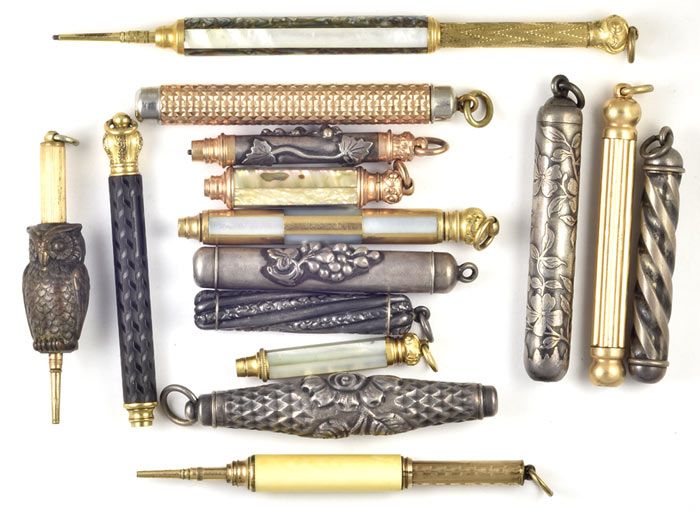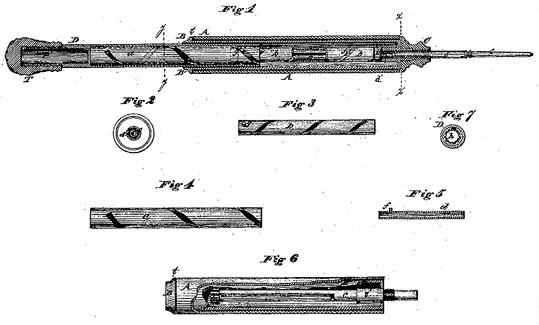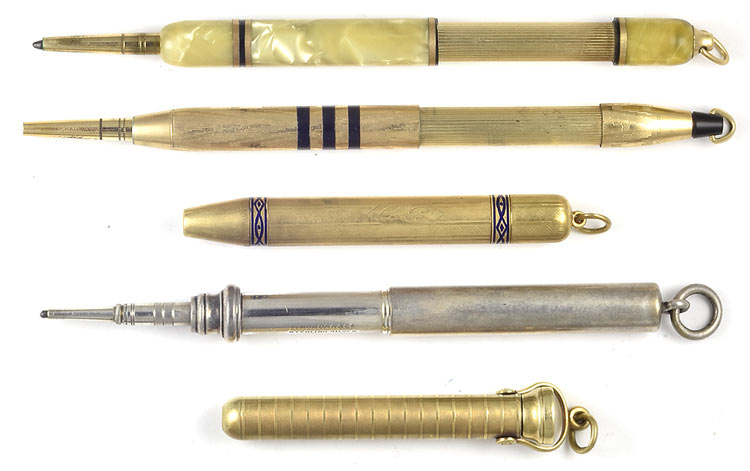
Magic pencils are a special kind of telescoping extending pencil in which the nozzle automatically extends when the extension shaft is pulled out from the back of the barrel (in a variant form the shaft is pulled forward by gripping the front ferrule). They were made in large quantities from the 1870s to the early 1900s with production continuing on a much reduced scale for decades thereafter. New York City was the center of magic pencil manufacture, with makers also in Britain, France, and Germany. The range of designs was vast: collecting magic pencils is truly an inexhaustable pursuit.

The origins of the magic pencil are obscure. The essential principle appears in Lownd's patent US40846 of 1863 and Rauch's patent US91665 issued June 22, 1869, but it is only with Ludden's patent US92853 of July 20, 1869 that we find it implemented in full magic pencil form. Not long after the following ad appeared, which is the earliest "magic pencil" reference we have yet found -- poetic and metaphorical usages excluded. Eastburn was listed in New York City directories as a pencilmaker from around 1852 on, previous listings describing him as a jeweler.

The Watchmaker and Jeweler, Jan 1870, p. 93
In the years following, mentions of magic pencils proliferate as do patents for their improvement. Yet there seems to have been no single master patent for what was termed the "magic movement" itself. The most common early patent date found on surviving magic pencils is March 21, 1871 for William S. Hicks's patent US112917, titled as an "Improvement on Pencil-Cases". Tellingly, in an 1876 administrative appeal denying a different Hicks patent application, the Acting Commissioner of Patents described the "magic movement" as "old and well-known" -- in other words, already in the public domain.

Hicks's patent US112917, March 21, 1871
Magic pencils operate with considerable internal mechanical disadvantage and often tight tolerances. It doesn't take much to make the mechanism stick. This is especially the case with smaller examples. Old dirt and congealed oil can be cleaned out with solvents (naphtha is one of the better options, as are products made for lock repair) and the innards then relubricated, but there may still be enough wear and tear that things don't operate as smoothly as new. In such cases it is best to be gentle. The nozzle may need a little assistance before it starts going back in, or the shaft may need a bit of a wiggle.

Later production magic pencils: Cross, unmarked German, Mordan with forward extension, Edward Todd 14K with suspension sheath
Link to magic pencils for sale